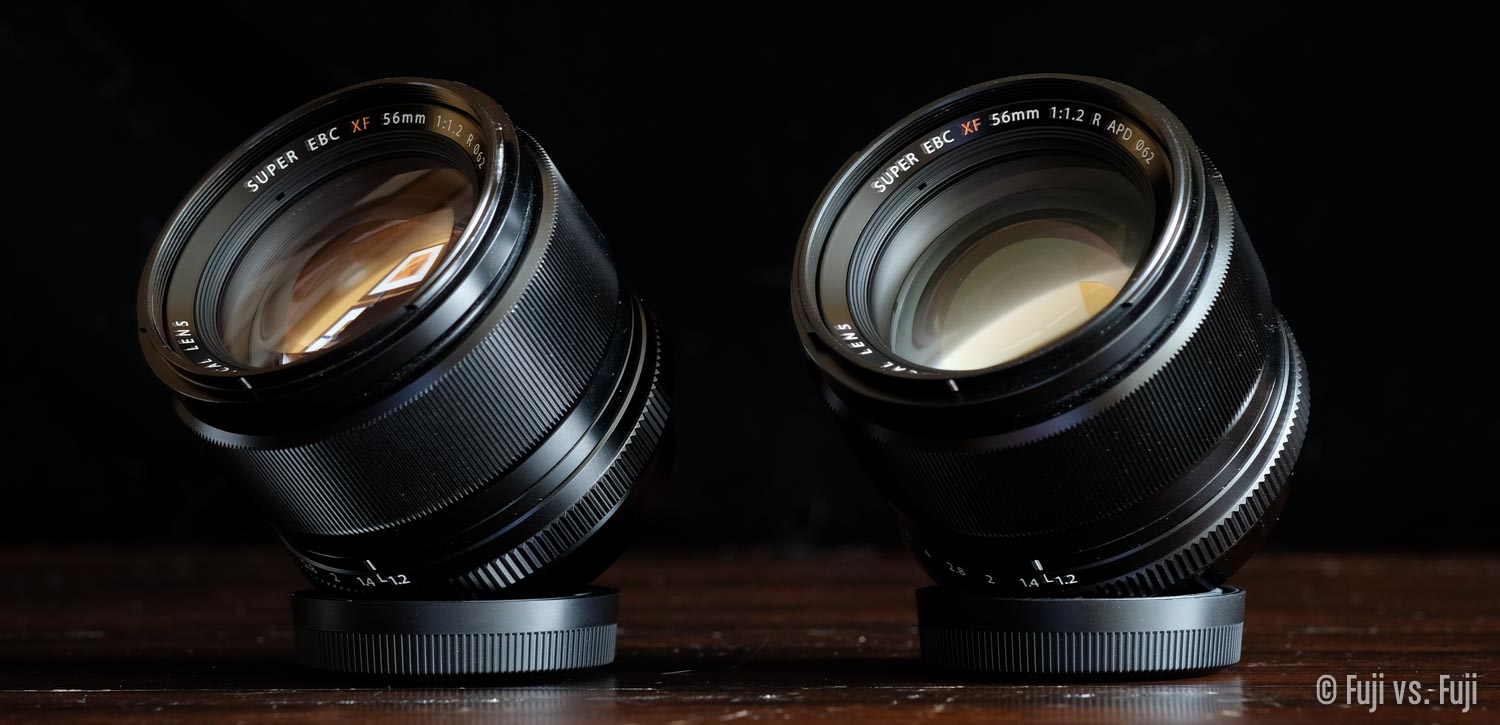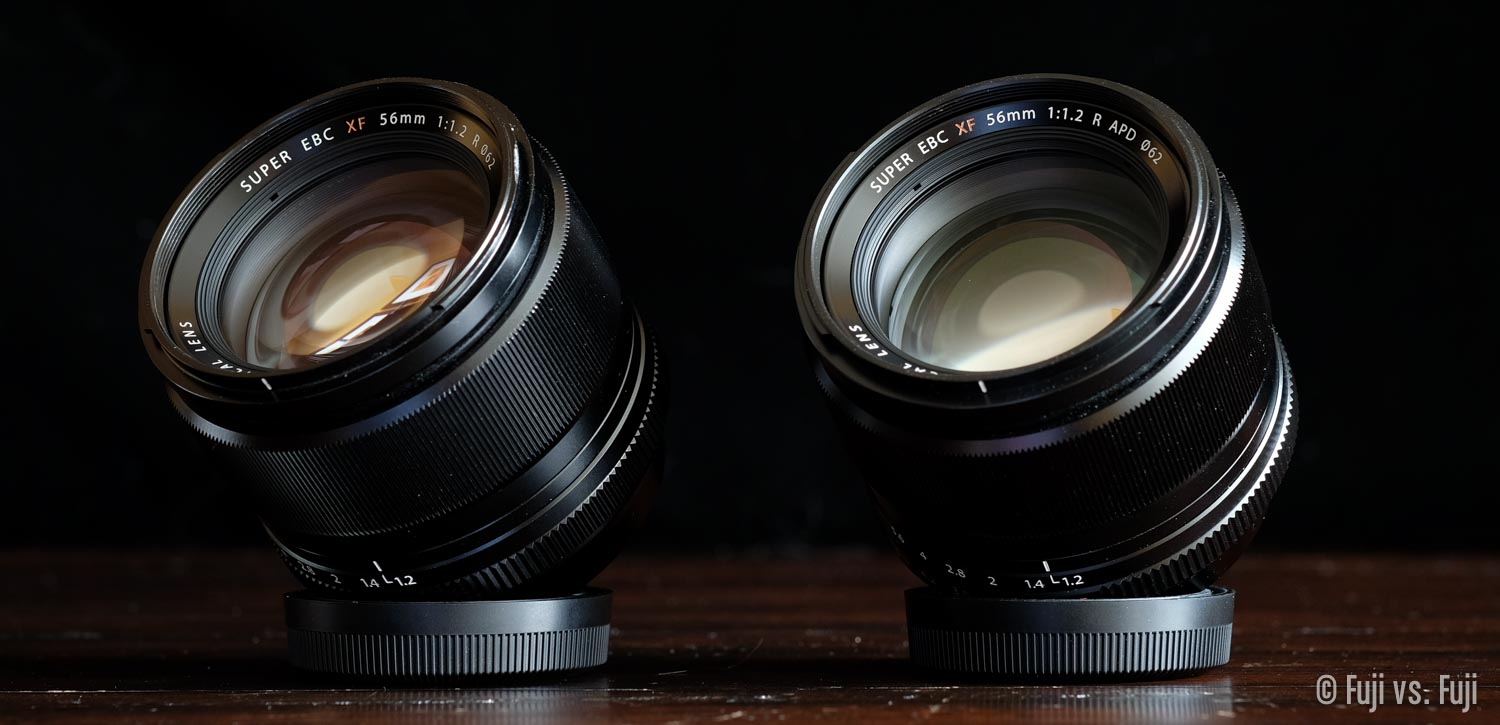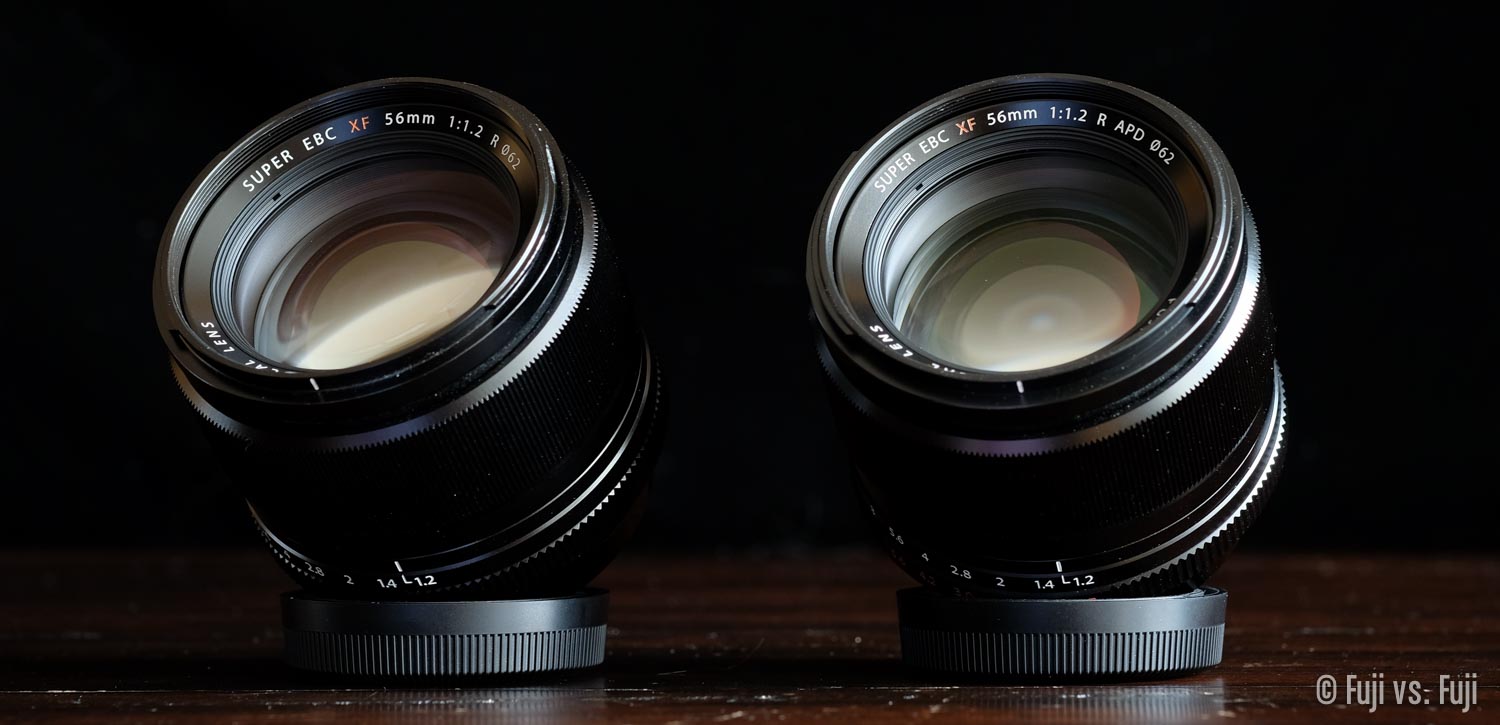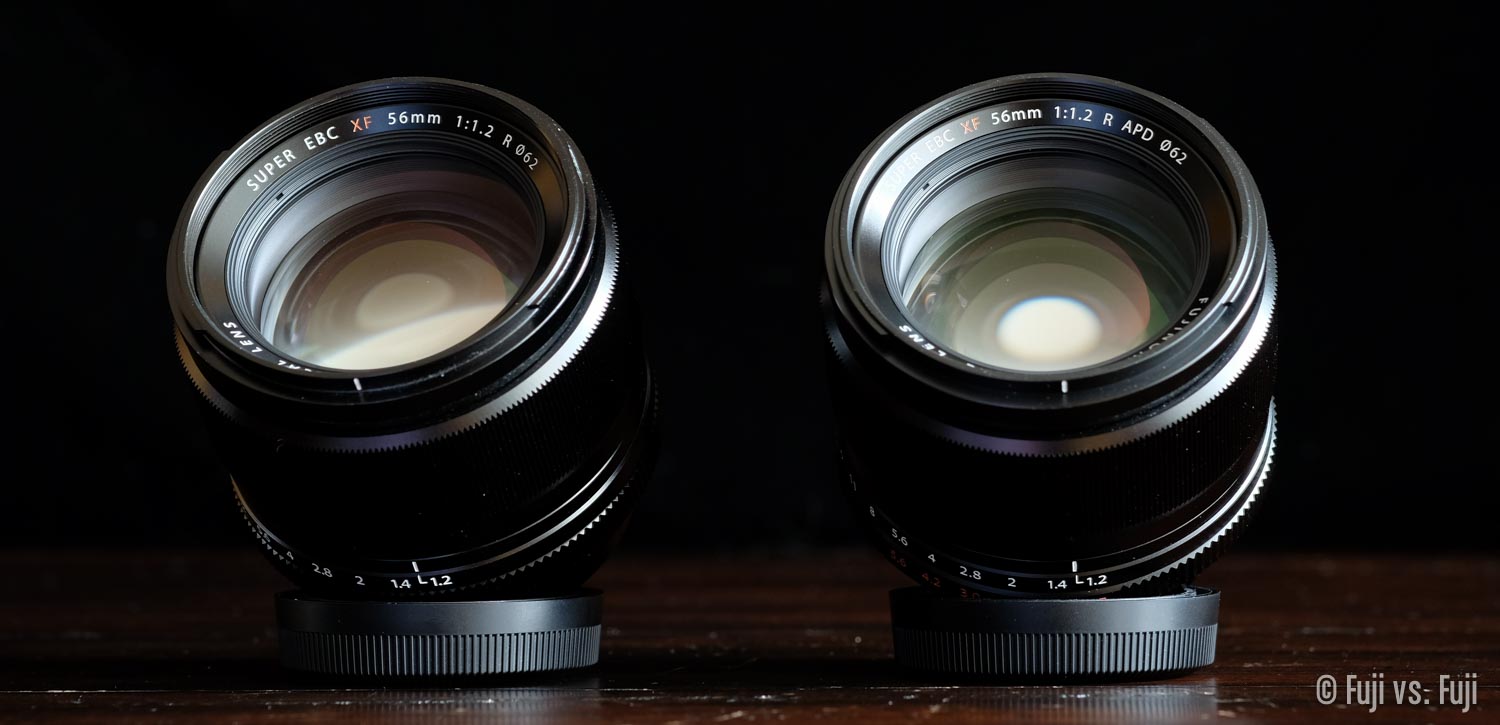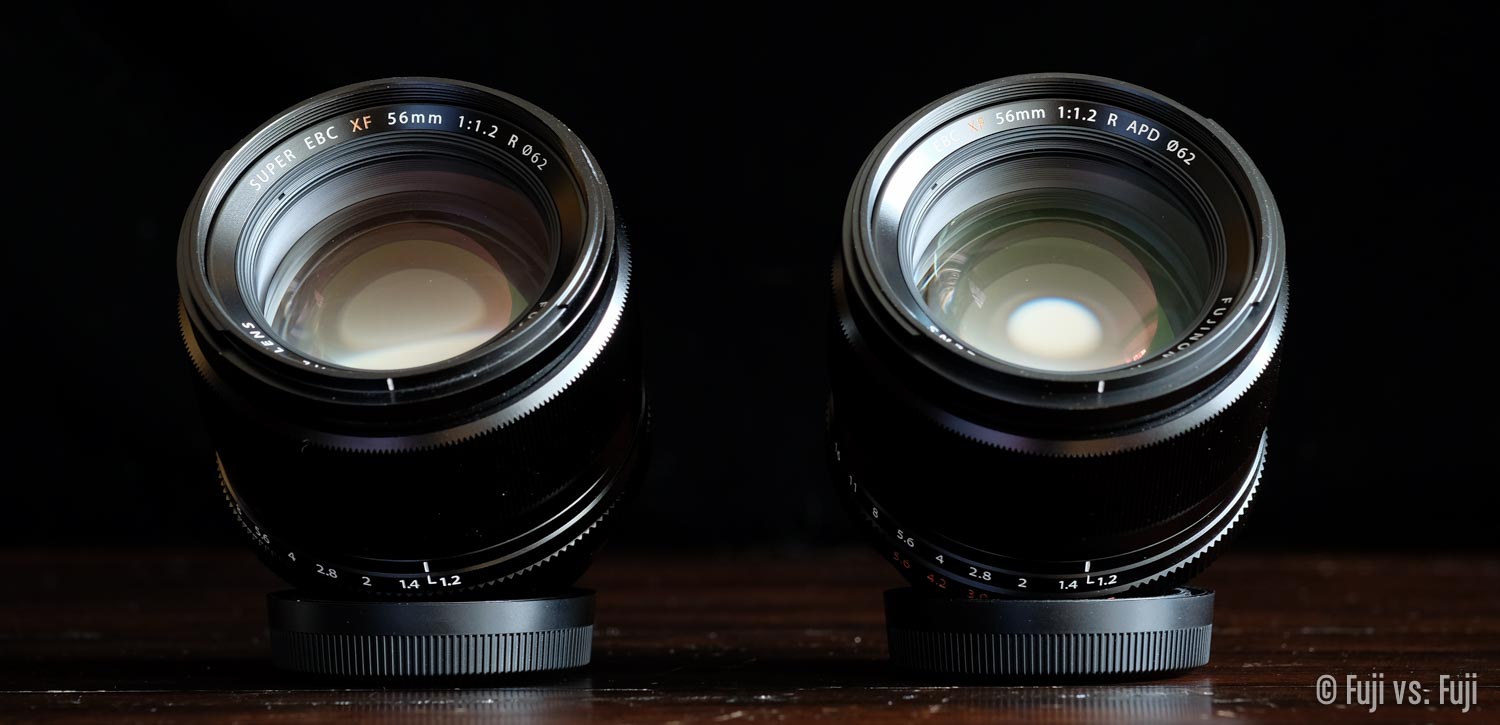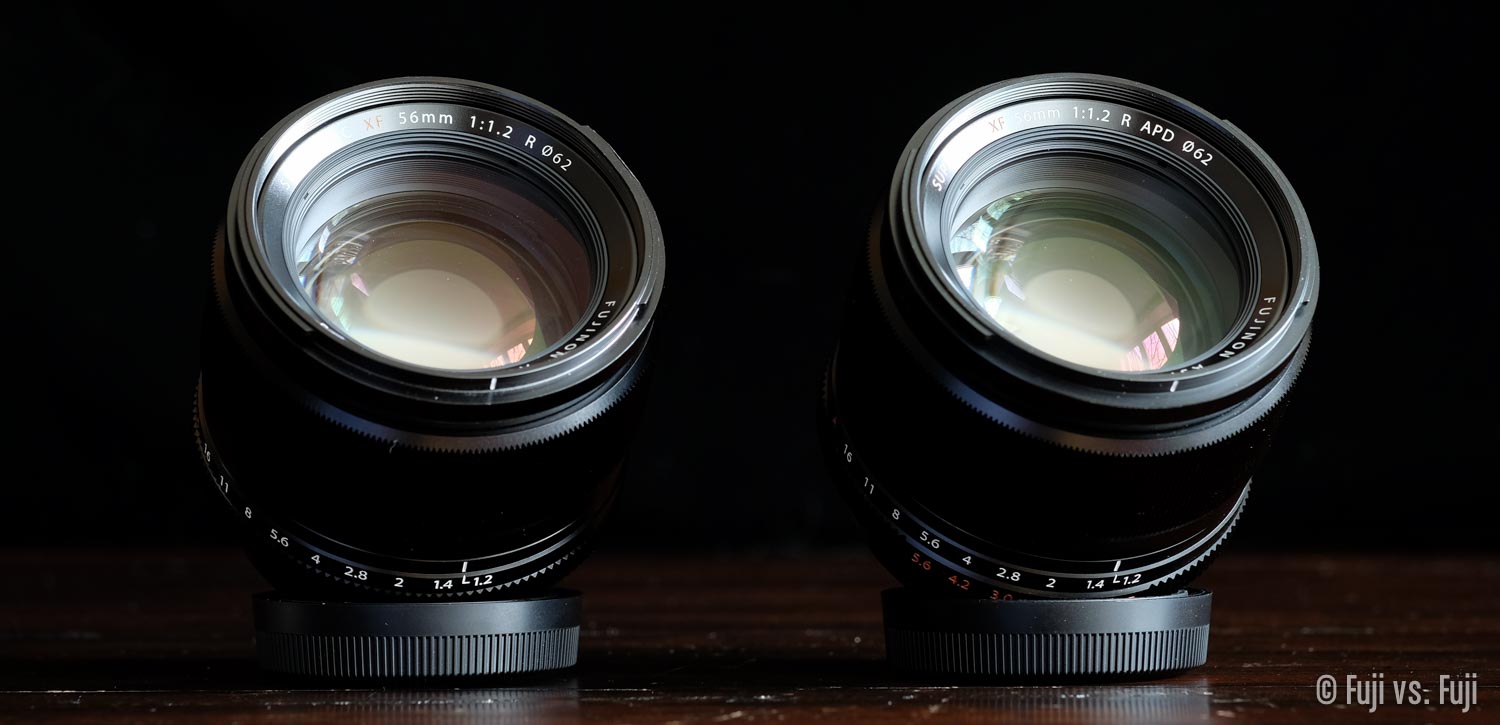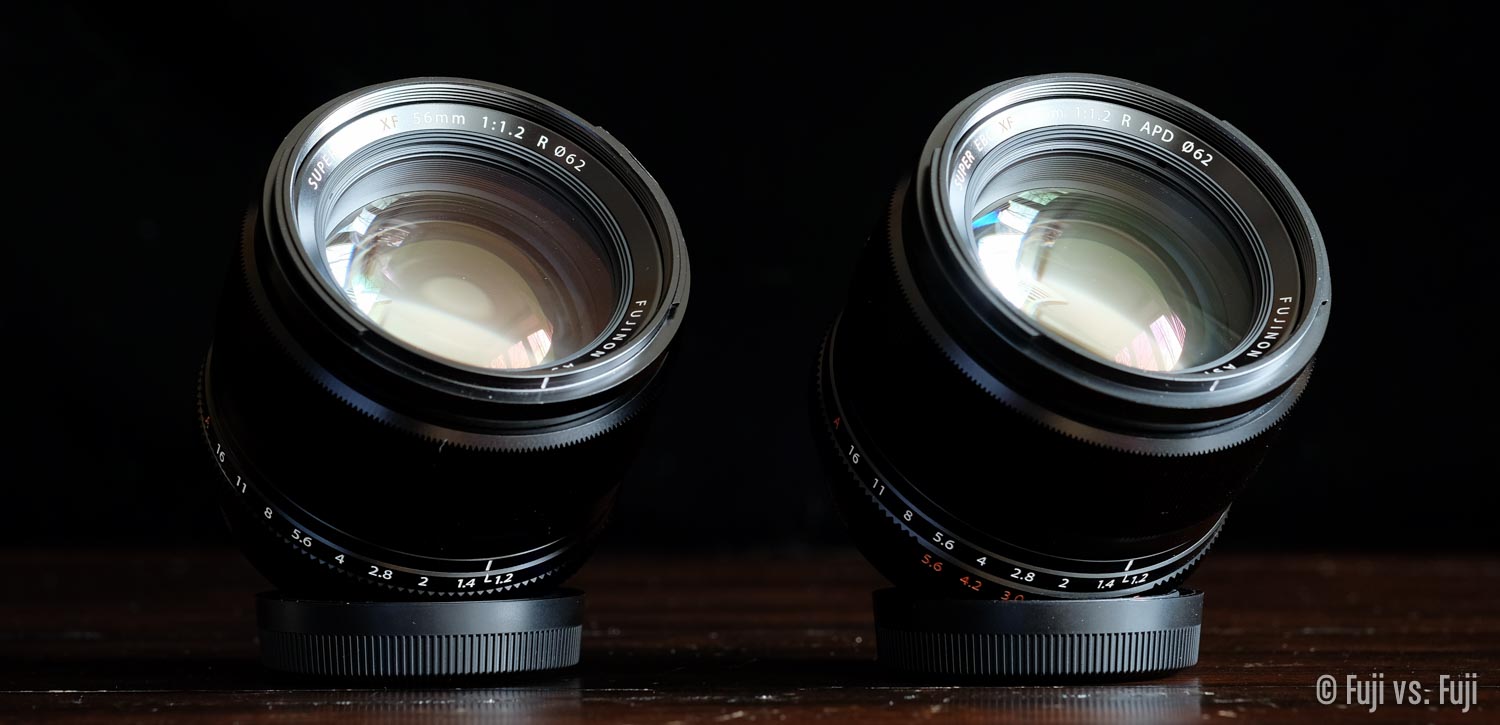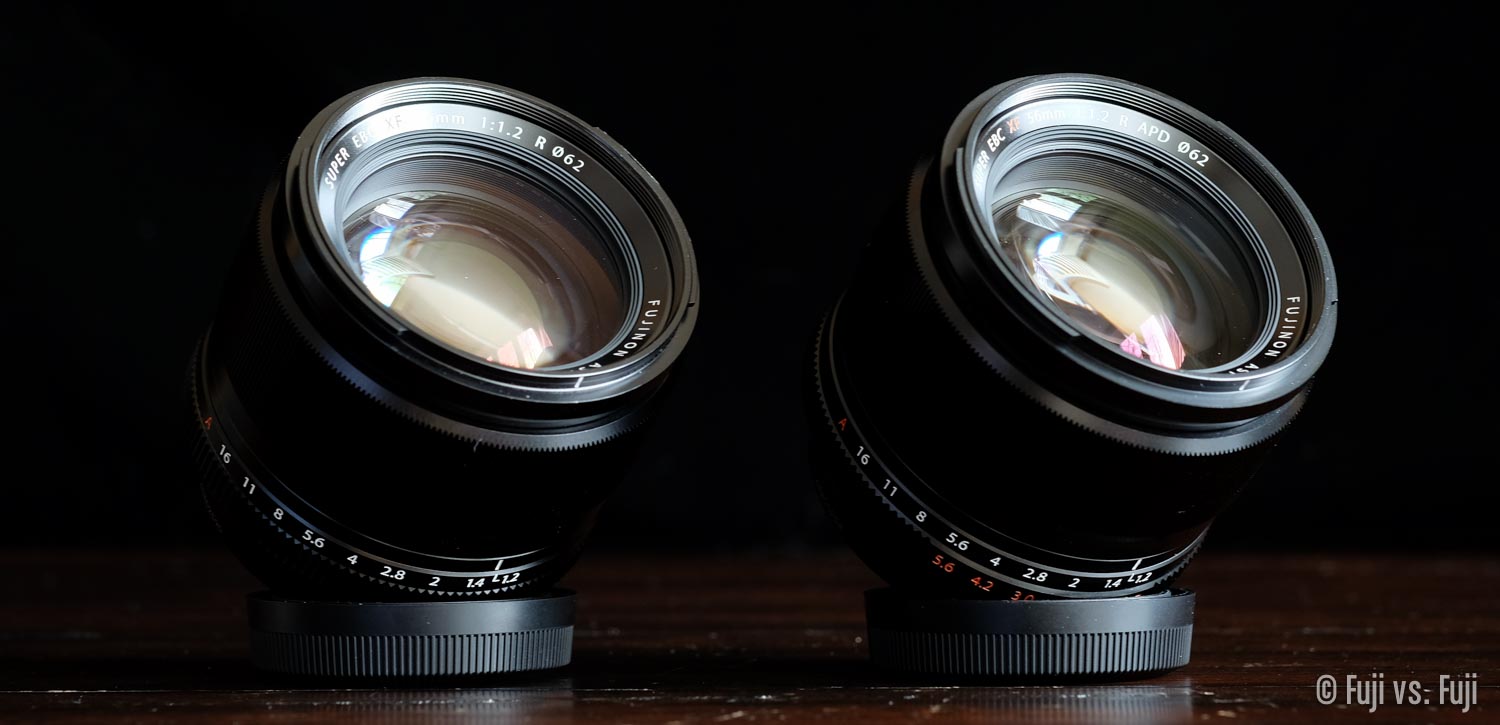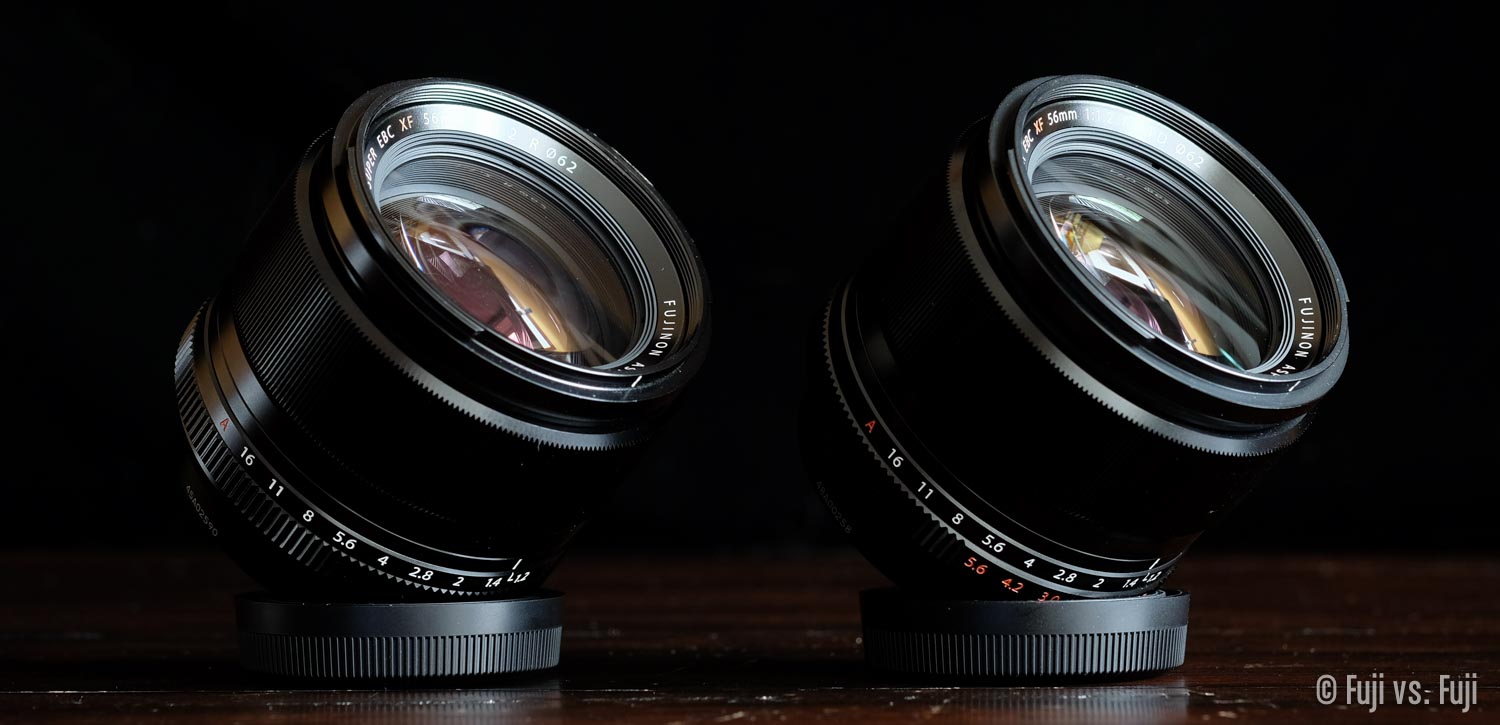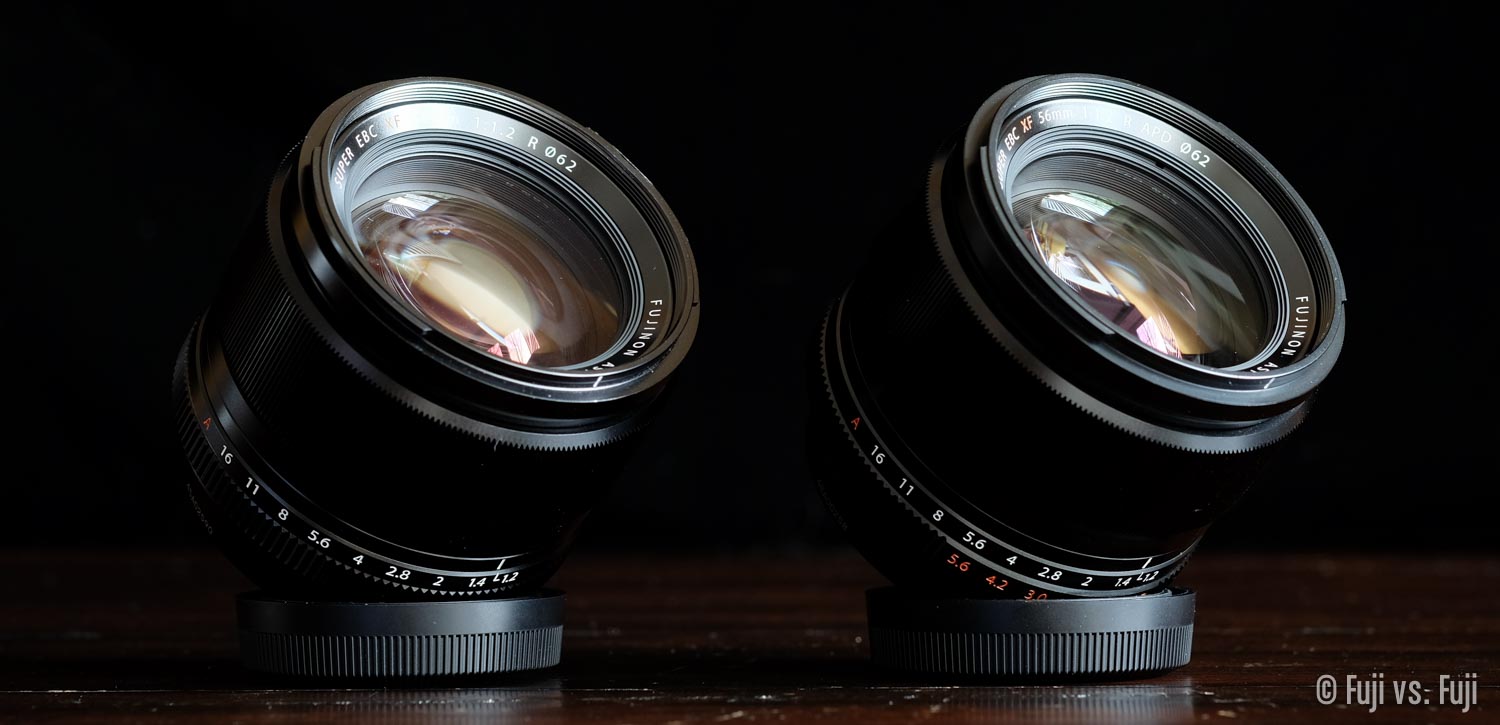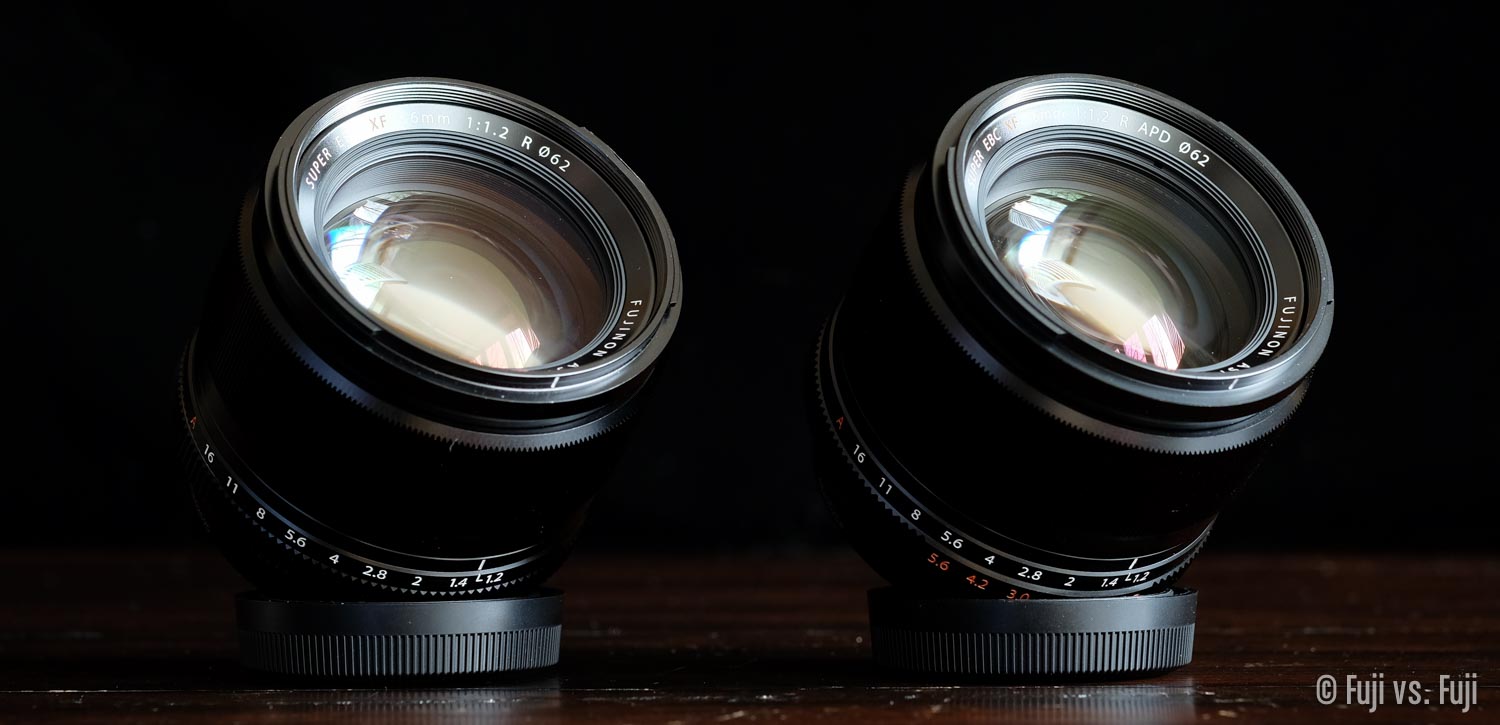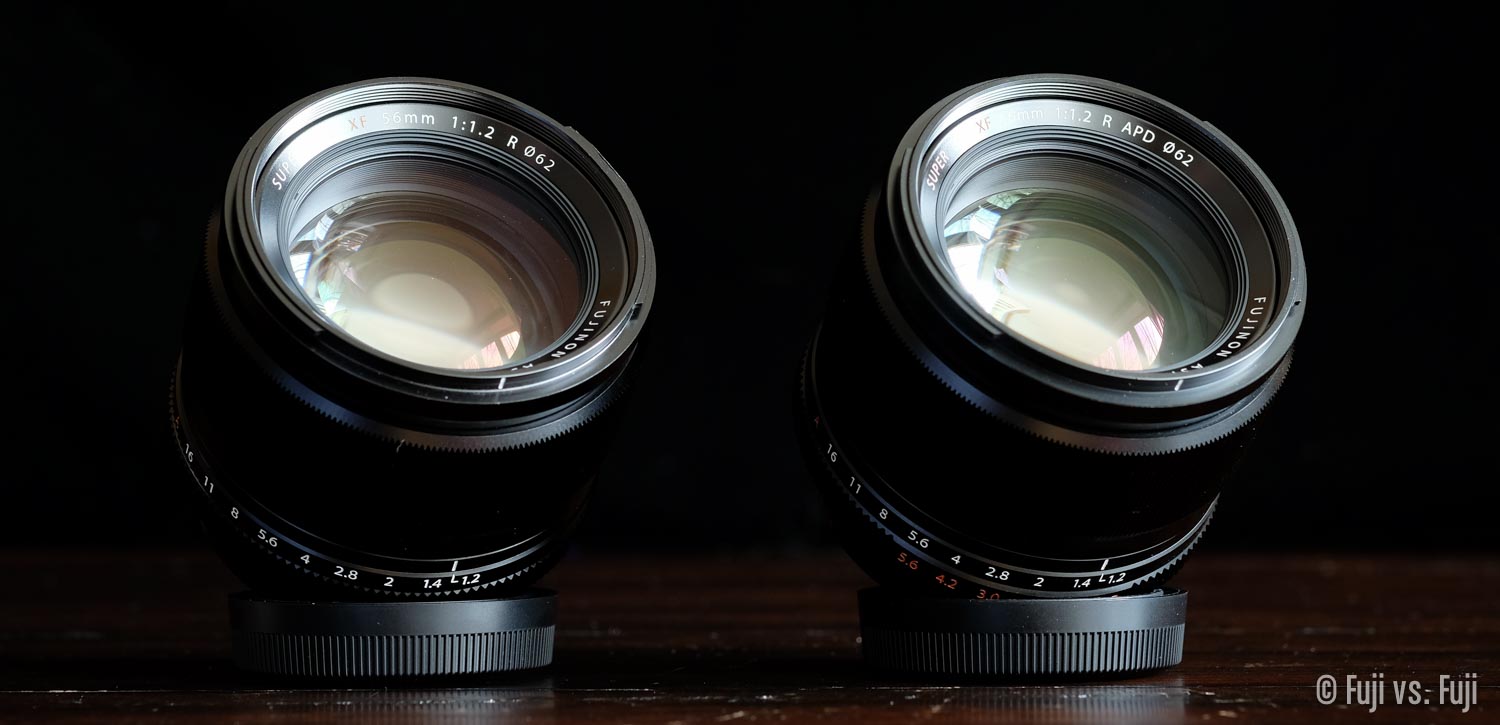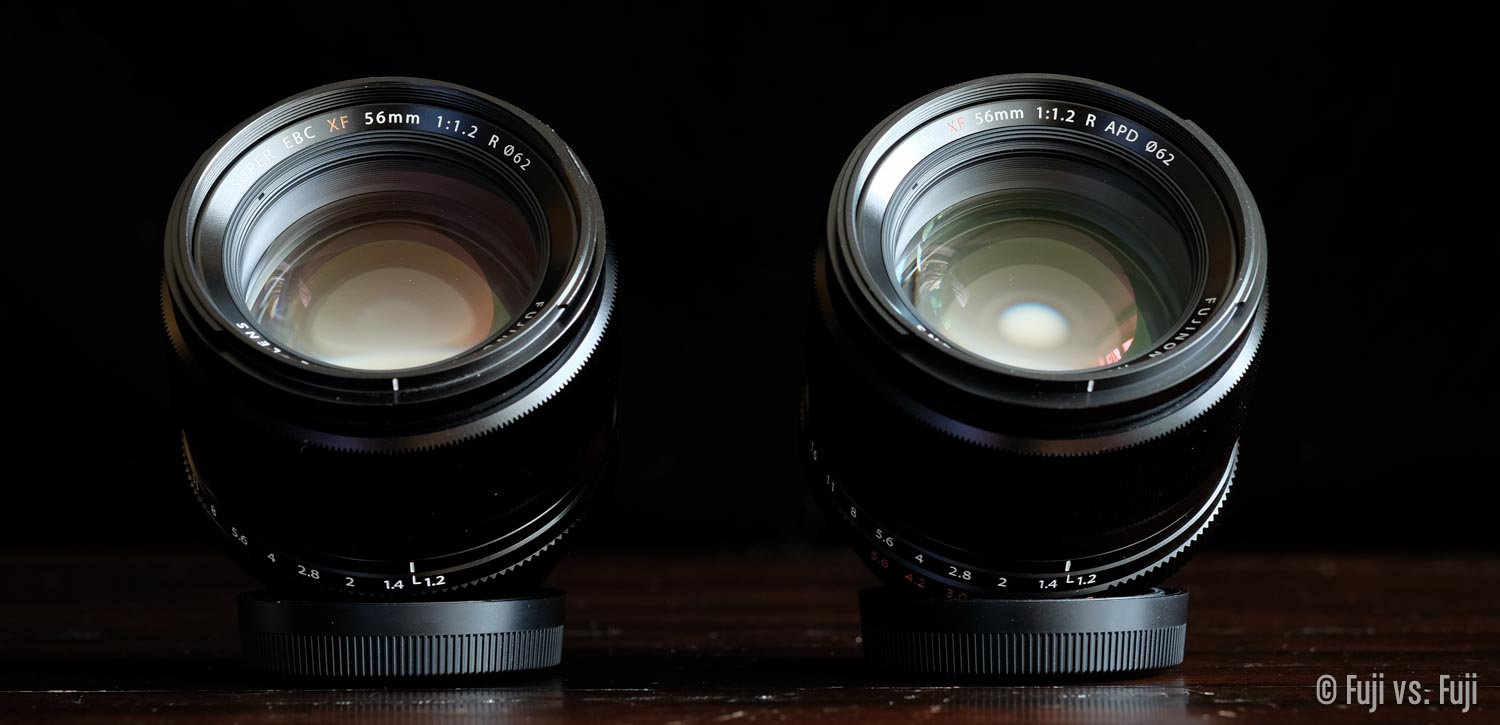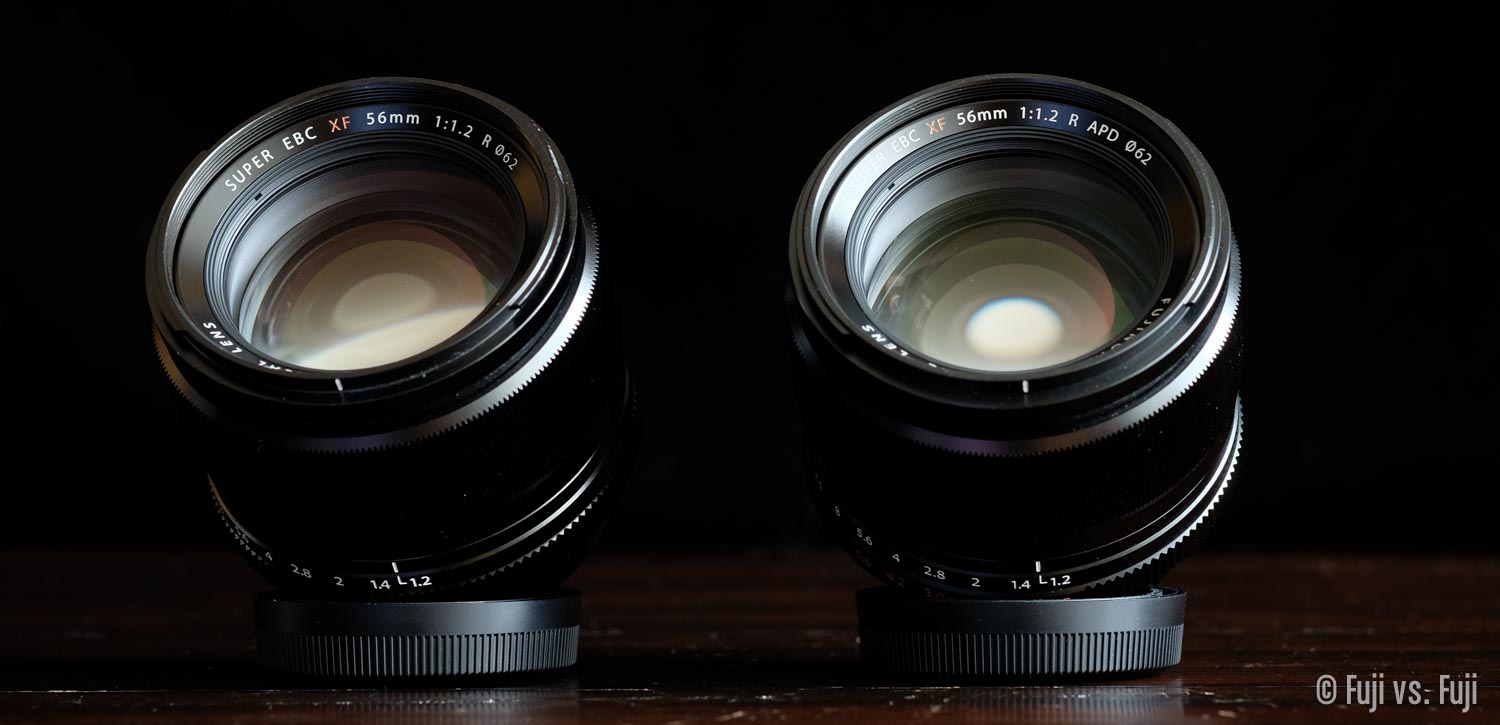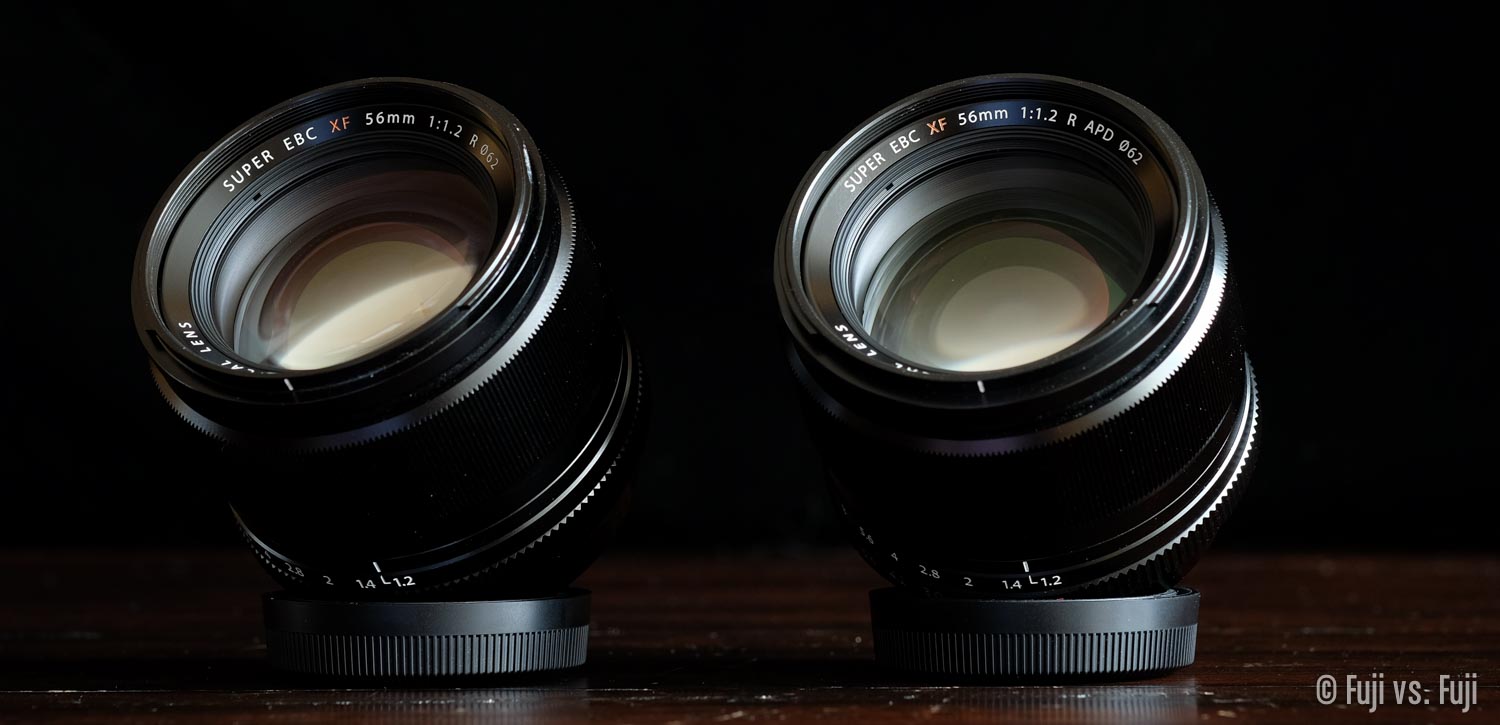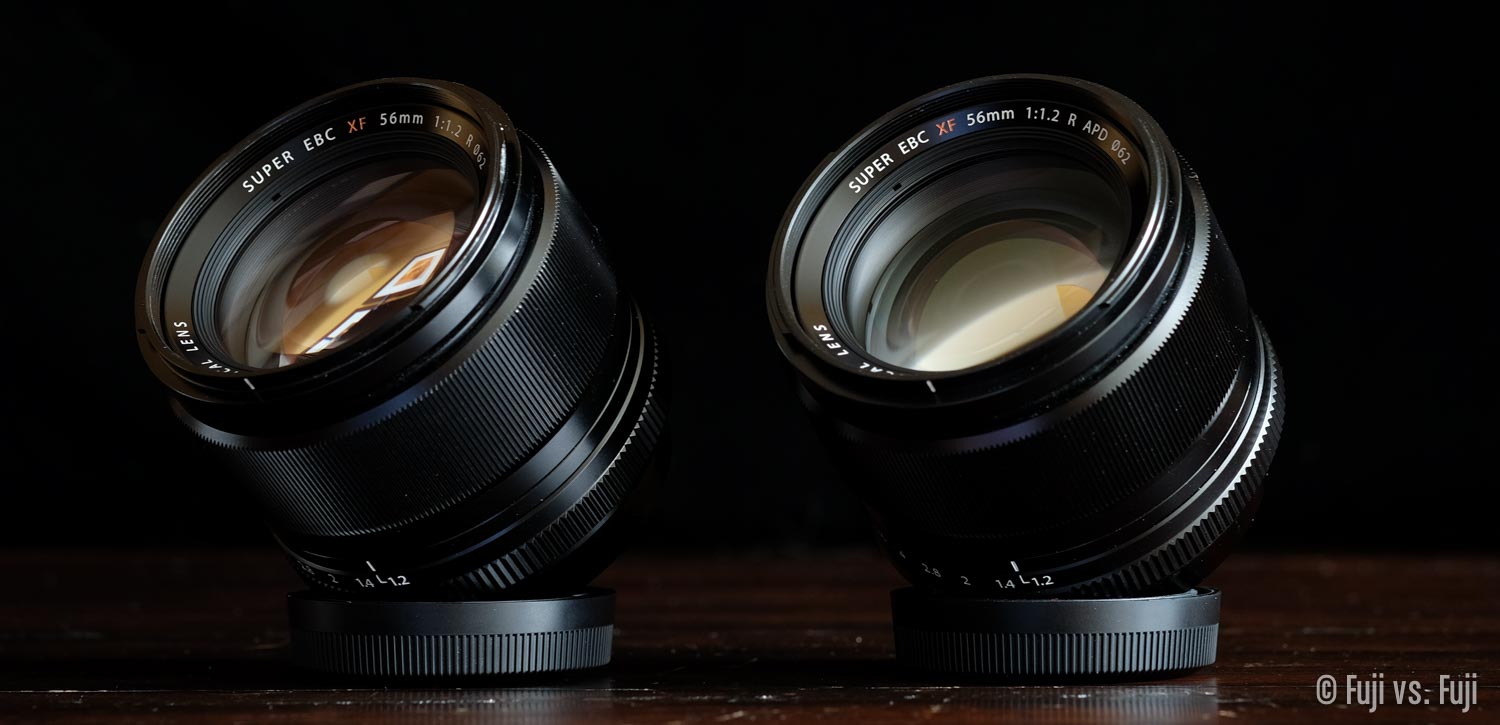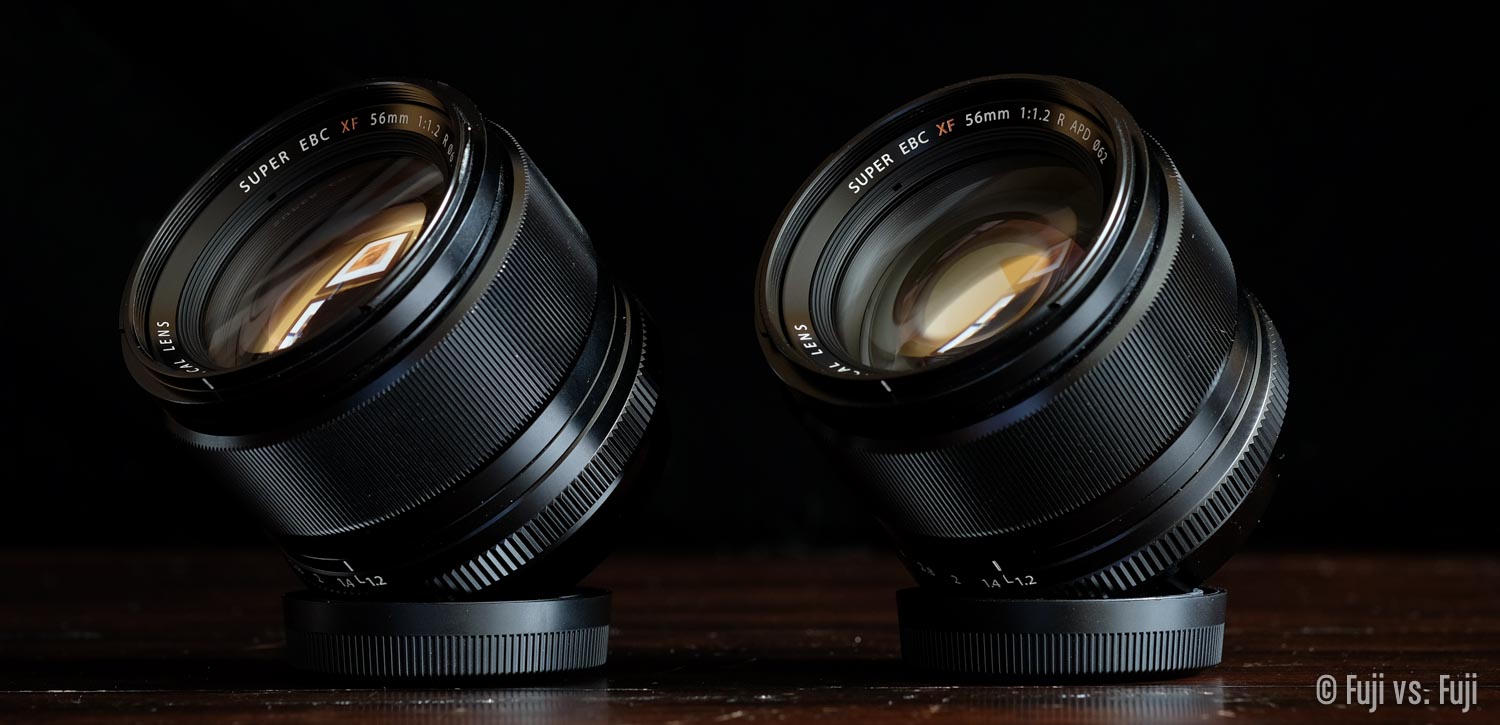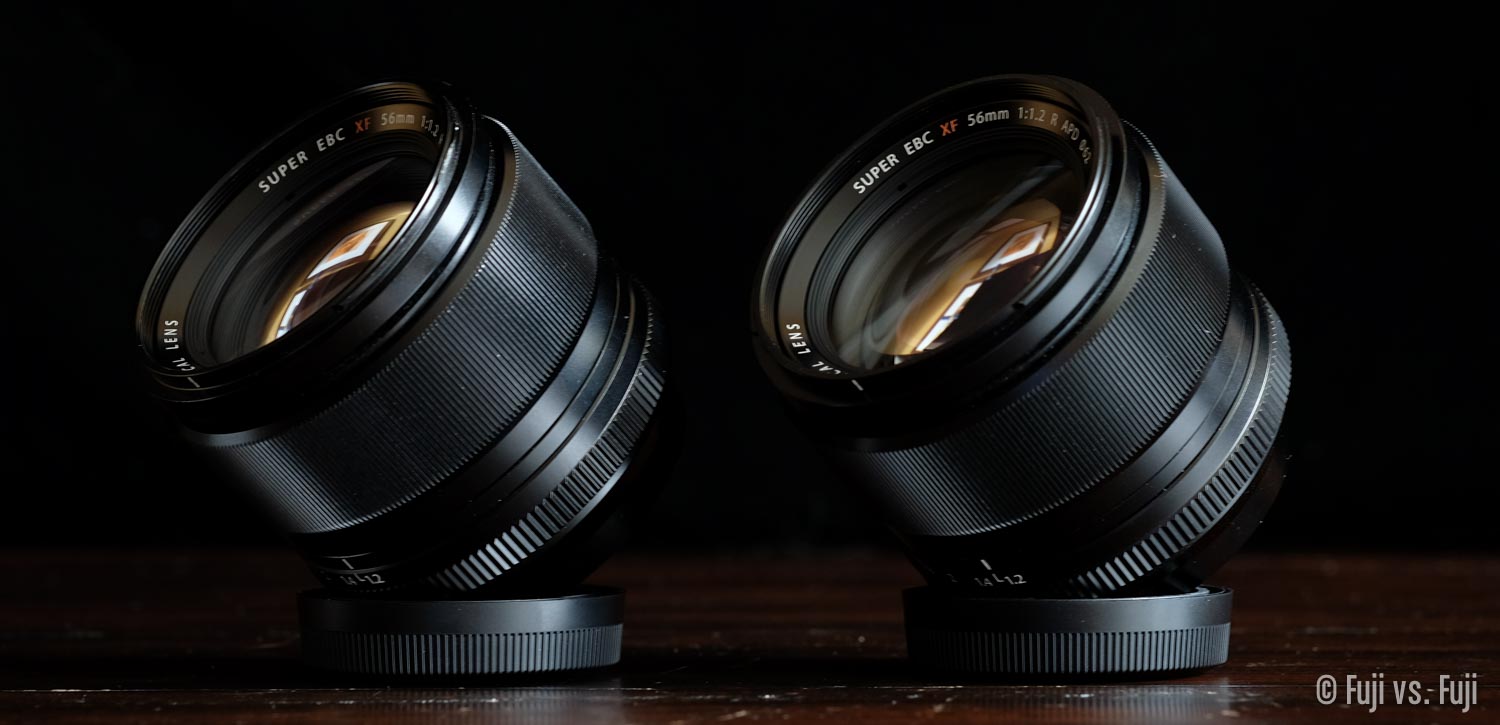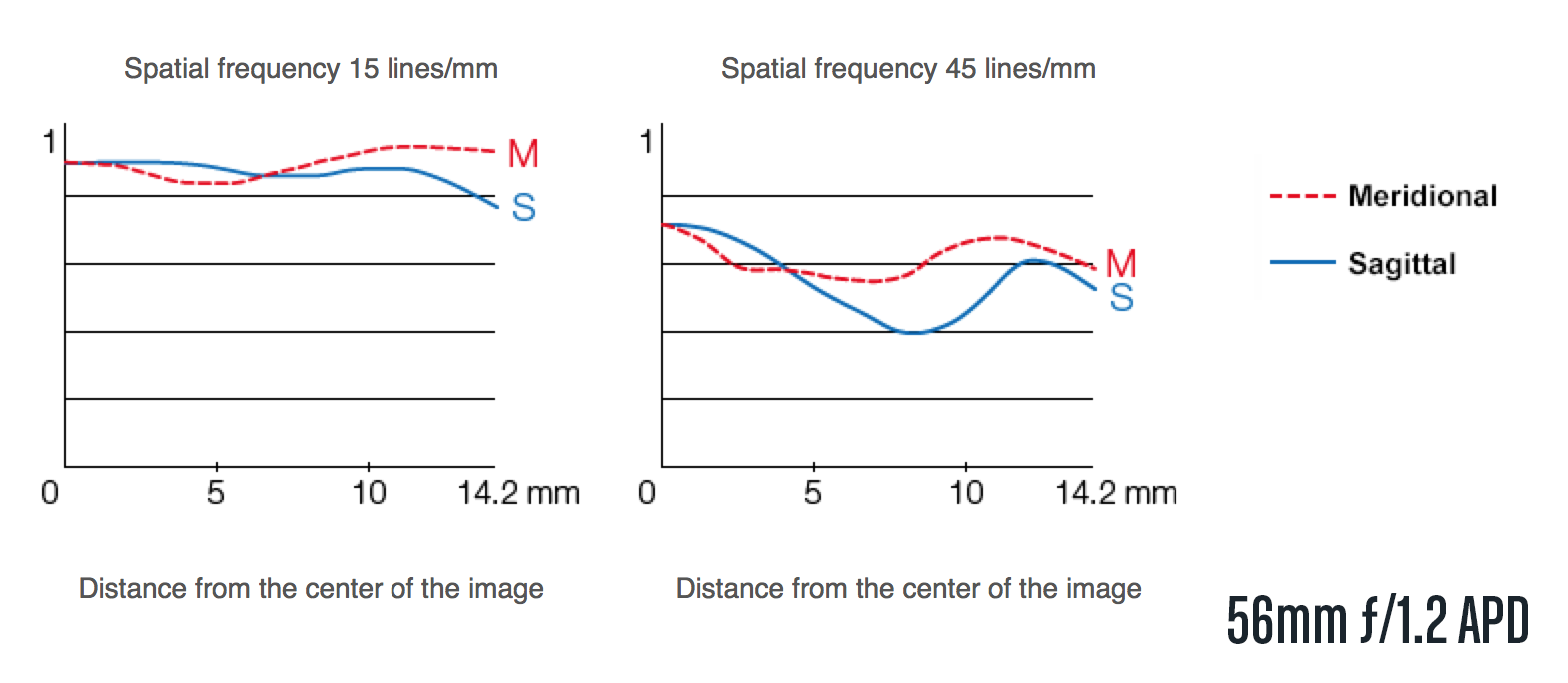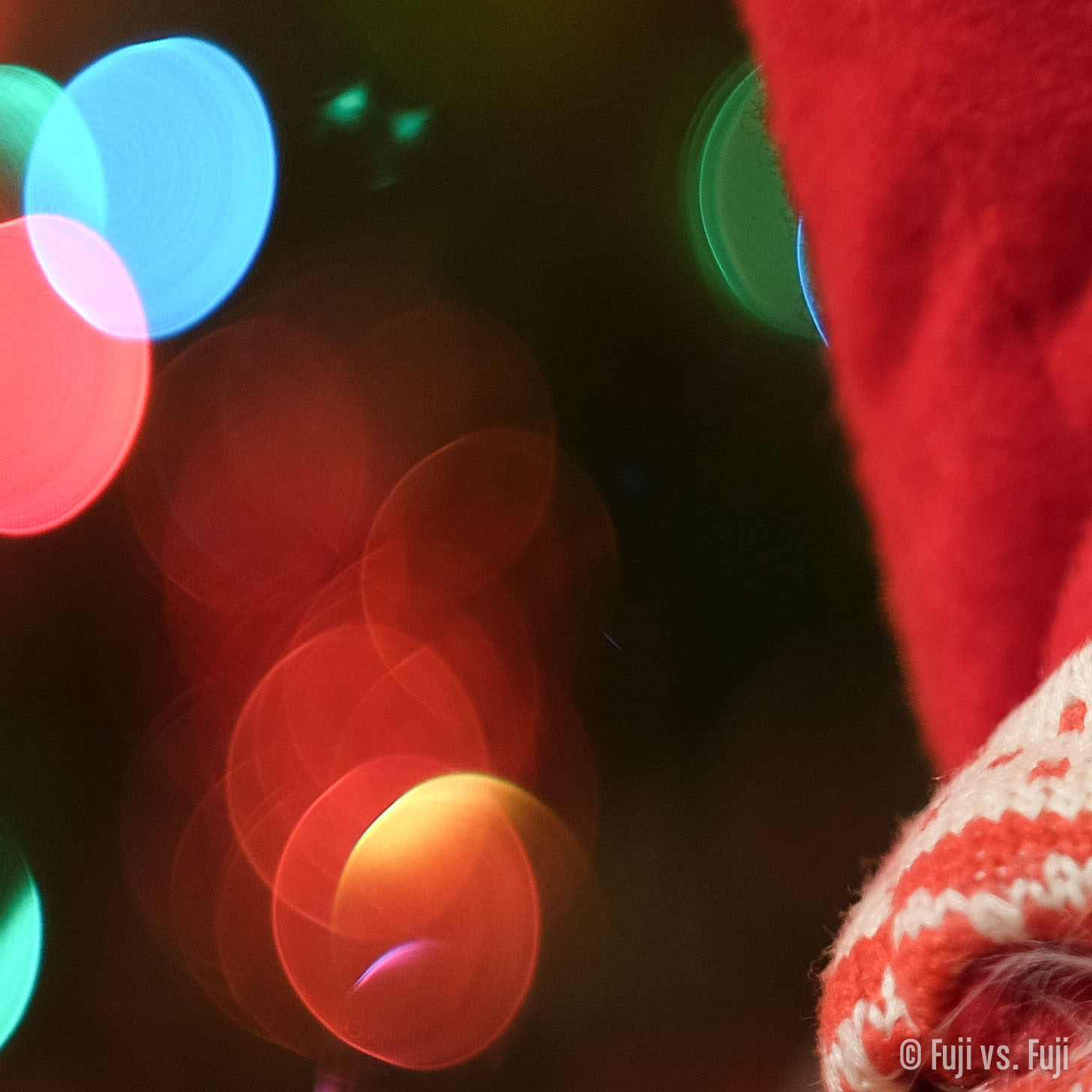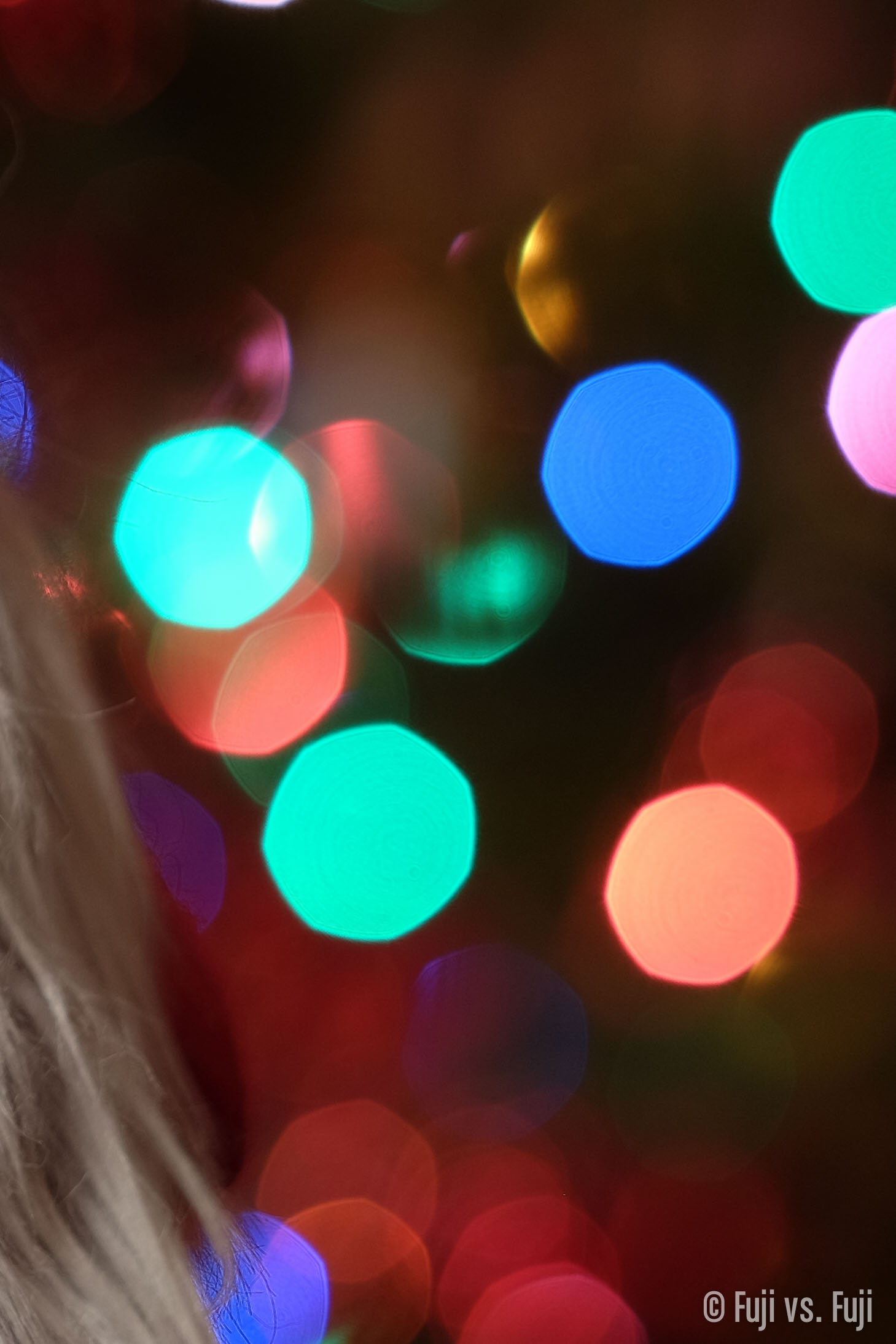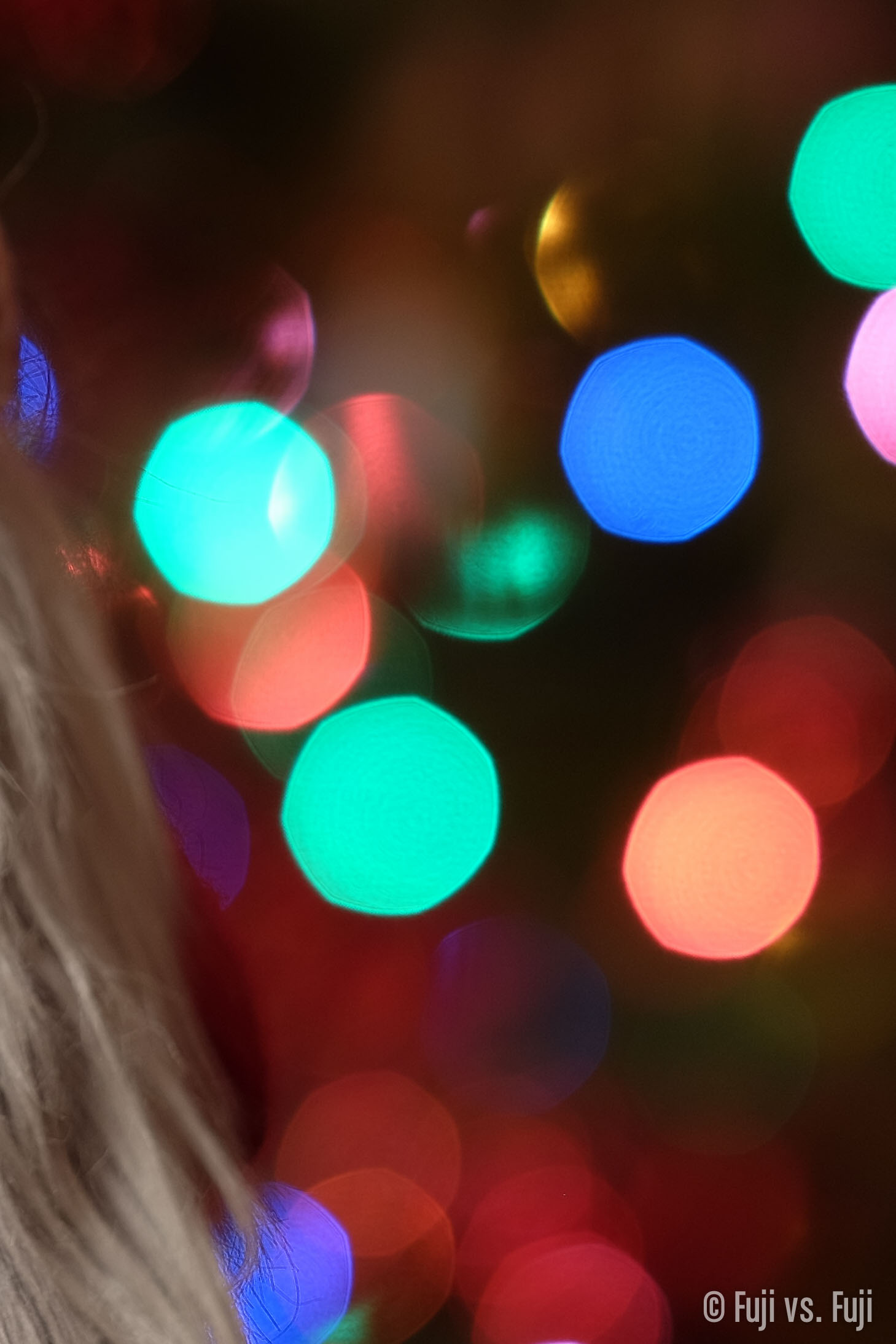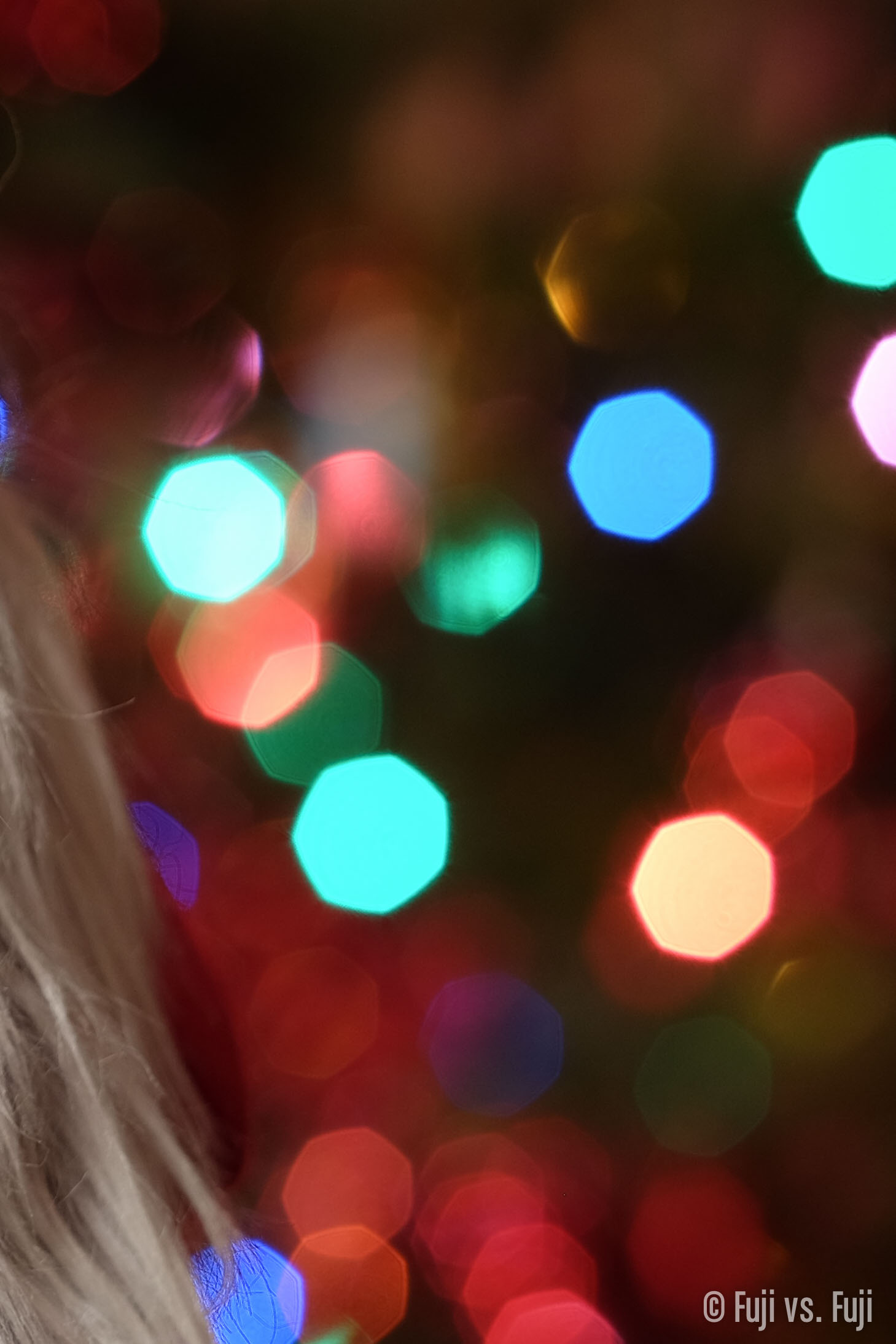Fuji XF 56mm F/1.2 vs. XF 56mm F/1.2 APD (apodization filter), a comparison between Fuji’s 85mm equivalents.
Introduction
The FUJINON XF 56mm F/1.2 APD is the first truly “exotic” lens release from Fuji for their interchangeable X-Series cameras. It’s niche in everything from the intended use to how it’s marketed to its price point.
This ad and tracker-free site is made possible by the support its readers. If you enjoy the content, you can help for free by using the links below. Thanks!
Specifications
Given these lenses are so similar in the specifications, identical in fact with the exception of the apodization filter, I’ll spare you my usual spec table. For the 56mm f/1.2’s specs, you can head over to my comparison of the it and the 60mm f/2.4 Macro.
You can see the effect the APD filter has in the image below.
Of possible interest are the MTF charts. These are not identical. I don’t typically make note of these things as they really don’t tell the whole story of a lens’ performance, but for those who are into it, an easy comparison is below. The difference is not surprising as the whole point of the APD lens is to achieve softer backgrounds surrounding your subject.
Handling
I gushed about the handling of the XF 56mm F/1.2 when I did my preliminary review of it. The APD is just as good and might even be better. The sample I have has an equally tight aperture ring, and an even tighter, more consistent-feeling focus ring. I like it.
For me, this lens has become strictly a workhorse. It’s not a lens I want to have on my daily carry camera unless it’s packed away neatly in my Billingham. Part of this is down to the size and weight of this lens—you’ll know you have it on the front of your camera—but it’s also just not a focal length I excel with when I’m out and about.
Performance
Light Gathering
The first compromise to note is the true light gathering capabilities of the APD. Below is a table of the exact f-stop markings found on the lens, which is quite handsome, for whatever that’s worth.
| XF 56mm F/1.2 | f/1.2 | f/1.4 | f/2 | f/2.8 | f/4 | f/5.6 |
|---|---|---|---|---|---|---|
| XF 56mm F/1.2 APD | f/1.7 | f/1.8 | f/2.3 | f/3 | f/4.2 | f/5.6 |
As you can see the amount of light lost by the APD filter goes down as the lens is stopped down. This makes perfect sense given the appearance of the APD filter, which looks like a circular graduated neutral density filter.
It must be noted that while the light gathering is impacted by the APD filter, all other aspects of the wide aperture like depth of field are not. Depth of field and “bokeh”—the quality in which a lens renders out of focus backgrounds—are different things.
Autofocus
The biggest compromise in choosing the APD is the loss of Phase Detect AF. In good light, it isn’t terribly noticeable. Move into poor light though, and you could easily find your APD hunting, pushing past focus, and then dragging itself through its focus range before finding the area of most contrast. I’ve missed a few genuine expressions already waiting for the APD to acquire focus.
In good light, in the studio or in prefocused situations, this simply does not matter, so what it will come down to is whether or not the difference in bokeh that the APD makes is worth the price premium, our third and final compromise.
Price
At $1,499, the APD is a full 50% more than the the 56mm f/1.2 regular, and with current rebates—something I still think is a bad idea for Fuji—it’s almost twice the price to preorder. The price alone is enough to beg the question, “is it worth it?”
Bokeh
Let’s see how much better the bokeh really is with this extra 500-dollar piece of glass. This might be the perfect season to test bokeh, what with all the twinkle lights and decorations.
Festive Gnome
First up, bokeh balls. This was my first test shot as I thought it would definitely be the answer to how different the bokeh is between these two lenses. I was disappointed. The difference is there, and you can start to see what the APD filter is trying to do, but it’s arguable whether or not it’s better.
I need to note that while it appears as though the framing shifts slightly, the position of the camera and my subjects did not move at all. Only the lens was changed. I’m not sure how to account for the shift in framing. The difference is actually quite a bit more extreme than shown here as I tried to correct for it, but it’s worth noting I suppose if you have a lot of money and want to capture the exact same frame with both the 56mm f/1.2 and the 56mm f/1.2 APD.
f/1.2
f/1.4
At f/1.2 and f/1.4, there really is very little difference between the bokeh on either lens. What’s interesting is despite all these images being captured with the exact same neutralized camera settings, the images shot at f/1.2 from both lenses show less saturation, particularly in the blues and greens.
Another thing of note is the XF 56mm F/1.2 APD appears to have a warmer rendering to it. Unfortunately I don’t have any other copies of either lens to determine if this is just sample variation.
And when it comes to the bokeh, which lens is “better” is really up to you, but you can notice the impact of having the APD filter by how blurred the “bokeh balls” are. Here are some crops to help see the difference.
This may not look like much, but it’s a good indication of how that filter helps with creamier, less “nervous” bokeh. Let’s have a look at now smaller apertures are affected. We’ll stick to crops to really see the difference.
As you can see, the more you stop down, the less noticeable the affect is. By f/5.6, I’d say the difference is, what’s the word? Oh yes, negligible.
Front and Rear Bokeh
Next we’ll examine how the bokeh behaves along the Z-axis, both in front and behind the plane of focus.
Now we’re getting somewhere. The bokeh in front of the the plane of focus is definitely much smoother to my eye, and behind the plane of focus is looking a little less “nervous” as well. Here are some crops.
Conclusion
If I’m being honest, I was initially wondering what the difference was. The more I look at these images though, the more I can see the difference the APD filter is making in blurring out the background into a sea of smooth, dreamy, blurry, buttery, goodness. It’s the trained eye that picks up on nuances like this.
The kind of people I could see wanting the XF 56mm F/1.2 APD are:
- Studio photographers who need their backgrounds—or foregrounds—blurred out and can have their focus preset
- Outdoor portrait/wedding photographers where the lack of phase detect autofocus matters much less, and where backgrounds that are even just a little bit creamier can make the difference
I imagine someone out there somewhere has already attempted the Brenizer Method with the XF 56mm F/1.2 APD, and it ought to yield incredible results.
Should you buy it?
Already own the XF 56mm F/1.2: If you are are the biggest of bokeh nuts and don’t mind losing a bit of cash on the sale of the 56mm you already have, than sure. Otherwise, the 56mm f/1.2 you already have is a spectacular lens.
Don’t own either lens yet: This is a trickier question to answer. As of this writing, I’d pass on the APD. The price disparity with the current rebates is just too great. For $200 USD more than the cost of one APD, you can get a second XF 56mm F/1.2. When things get back to MSRP/MAP figures, it’s still tough to recommend spending upwards of $500 more. Even if Fuji claim it’s their “most advanced nano technology yet,” the fact that it’s essentially a single extra lens elements that has graduated neutral density on it is difficult to get around.
Realistically, the people who are going to get one of these lenses almost certainly already have it on order. The people on the fence will likely read this piece and take solace in the fact that their purchase of the regular XF 56mm F/1.2 was the pragmatic choice. I’m trying to convince myself I’m the latter, but I happen to use my XF 56mm F/1.2 pre-focused or in good light almost all of the time. I also have an appreciation and an understanding of how much of a premium any improvement on a lens of this calibre can be. This APD may have found a new home.
MARCH 1, 2015 UPDATE:
Since publishing this piece, I received my XF 50-140mm F/2.8 WR, which has all but supplanted the XF 56mm F/1.2 as my workhorse lens. For the photographer who does the same sort of thing, this could impact their buying decision in several ways:
The XF 50-140mm F/2.8 WR makes the XF 56mm F/1.2 (or XF 60mm F/2.4 Macro for that matter) redundant, and neither version of the 56 is needed.
The XF 56mm F/1.2 becomes even more of a specialty lens, making the improved bokeh of the APD version more desirable.
The XF 56mm F/1.2 is required for lower light, discrete situations that demand faster focusing, which makes the phase-detect-capable “regular” 56 the way to go.
In short, the new zoom hasn’t helped in choosing between the two, but might make the 56mm altogether unnecessary. Incredibly, the XF 50-140mm F/2.8 WR is only $100 more than the XF 56mm F/1.2 APD. My pick between the two is a no-brainer; the zoom.


